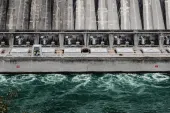
SEA needs $190b annual energy investments by 2030: IEA
This amount will help the region reach its climate goals.
Southeast Asia would need an energy investment of $190b yearly on average by 2030 to reach its climate goals amidst challenges of increasing total energy investment as well as allotting a higher share to clean energy technologies.
In a report, the International Energy Agency (IEA) said that this is coming from the annual average investment of around $70b between 2016 and 2020, wherein 40% went to clean energy technologies mostly solar photovoltaic (PV), wind, and grids.
Based on the stated policy scenarios, the region would need energy investment of $130b annually on average by 2030.
“Boosting investment in clean energy technologies requires strengthening clean energy policy and regulatory frameworks and addressing a wide range of financial hurdles,” the IEA said, adding that this could reduce the costs of clean energy projects.
Citing as an example, the agency said the levelised cost of energy of solar PV in Indonesia could be lower by 40% if investment and financing risks were comparable to advanced economies.
Having well-designed frameworks which include clear policy targets, independent regulation, least-cost system planning and cost recovery tariffs are crucial in attracting investors, IEA said
Progress on this front can be observed in many parts of the region, including the more ambitious climate targets set by Indonesia, Malaysia, Thailand, and Vietnam, and the updated expansion plans for renewables and changes in power purchasing agreements, it said.
However, there are still uncertainties in many countries due to over remuneration mechanisms and tariff levels for renewable output “which affect risk perceptions and the cost of capital for clean energy projects.”
“Commitments and policies to phase out unabated coal plants and deploy low-carbon fuels would send important long-term signals to investors,” it said.
Unpredictable regulatory frameworks and restrictions on foreign direct investments and currency risks also pose threats to investment flows, the agency said, noting that international development finance plays a key role in driving private funds, especially for projects at the early development stage, new technologies, and technologies with specific risks.



















 Advertise
Advertise







